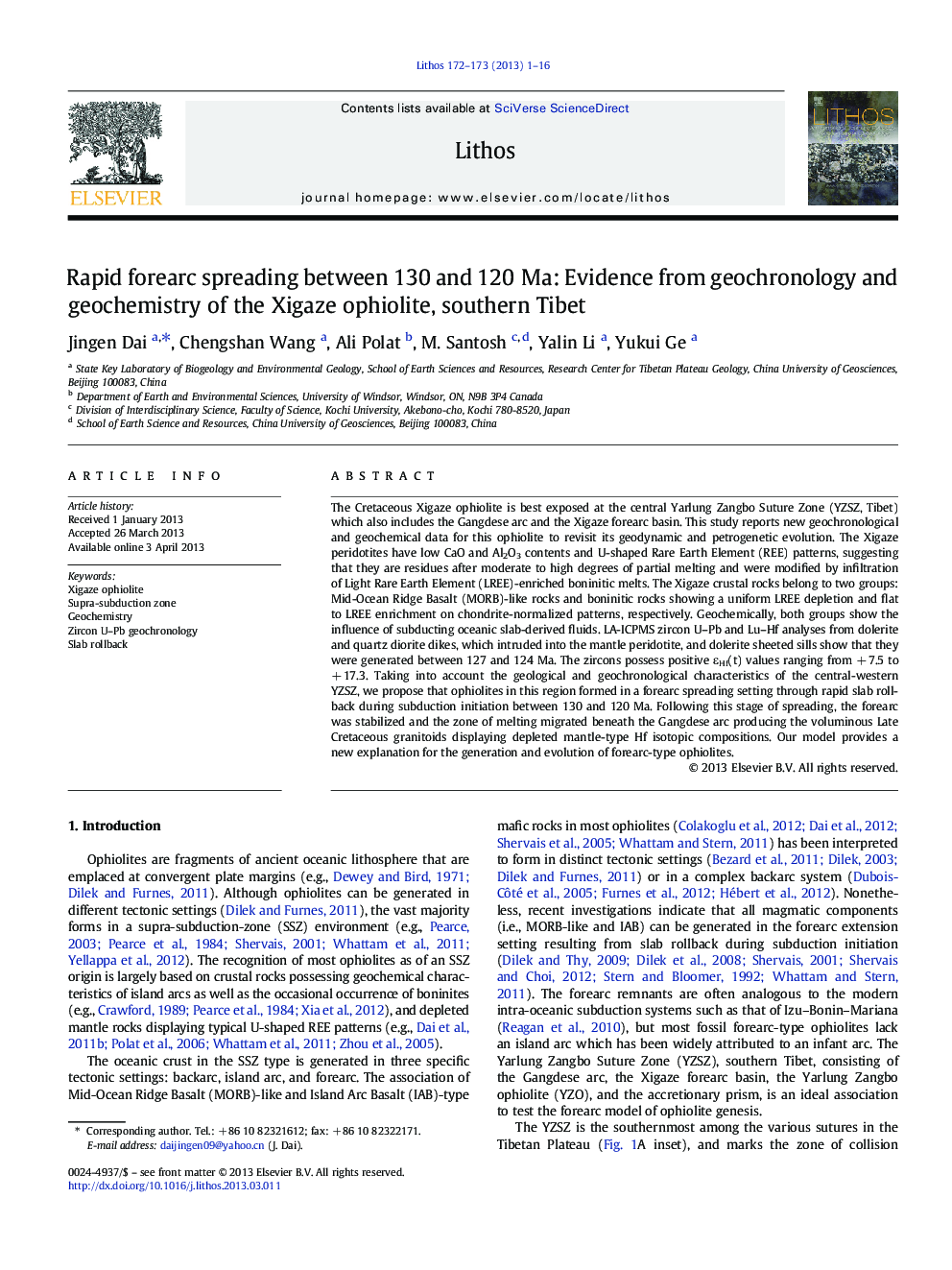| کد مقاله | کد نشریه | سال انتشار | مقاله انگلیسی | نسخه تمام متن |
|---|---|---|---|---|
| 6440850 | 1638691 | 2013 | 16 صفحه PDF | دانلود رایگان |
عنوان انگلیسی مقاله ISI
Rapid forearc spreading between 130 and 120Â Ma: Evidence from geochronology and geochemistry of the Xigaze ophiolite, southern Tibet
دانلود مقاله + سفارش ترجمه
دانلود مقاله ISI انگلیسی
رایگان برای ایرانیان
کلمات کلیدی
موضوعات مرتبط
مهندسی و علوم پایه
علوم زمین و سیارات
ژئوشیمی و پترولوژی
پیش نمایش صفحه اول مقاله

چکیده انگلیسی
The Cretaceous Xigaze ophiolite is best exposed at the central Yarlung Zangbo Suture Zone (YZSZ, Tibet) which also includes the Gangdese arc and the Xigaze forearc basin. This study reports new geochronological and geochemical data for this ophiolite to revisit its geodynamic and petrogenetic evolution. The Xigaze peridotites have low CaO and Al2O3 contents and U-shaped Rare Earth Element (REE) patterns, suggesting that they are residues after moderate to high degrees of partial melting and were modified by infiltration of Light Rare Earth Element (LREE)-enriched boninitic melts. The Xigaze crustal rocks belong to two groups: Mid-Ocean Ridge Basalt (MORB)-like rocks and boninitic rocks showing a uniform LREE depletion and flat to LREE enrichment on chondrite-normalized patterns, respectively. Geochemically, both groups show the influence of subducting oceanic slab-derived fluids. LA-ICPMS zircon U-Pb and Lu-Hf analyses from dolerite and quartz diorite dikes, which intruded into the mantle peridotite, and dolerite sheeted sills show that they were generated between 127 and 124 Ma. The zircons possess positive εHf(t) values ranging from + 7.5 to + 17.3. Taking into account the geological and geochronological characteristics of the central-western YZSZ, we propose that ophiolites in this region formed in a forearc spreading setting through rapid slab rollback during subduction initiation between 130 and 120 Ma. Following this stage of spreading, the forearc was stabilized and the zone of melting migrated beneath the Gangdese arc producing the voluminous Late Cretaceous granitoids displaying depleted mantle-type Hf isotopic compositions. Our model provides a new explanation for the generation and evolution of forearc-type ophiolites.
ناشر
Database: Elsevier - ScienceDirect (ساینس دایرکت)
Journal: Lithos - Volumes 172â173, July 2013, Pages 1-16
Journal: Lithos - Volumes 172â173, July 2013, Pages 1-16
نویسندگان
Jingen Dai, Chengshan Wang, Ali Polat, M. Santosh, Yalin Li, Yukui Ge,